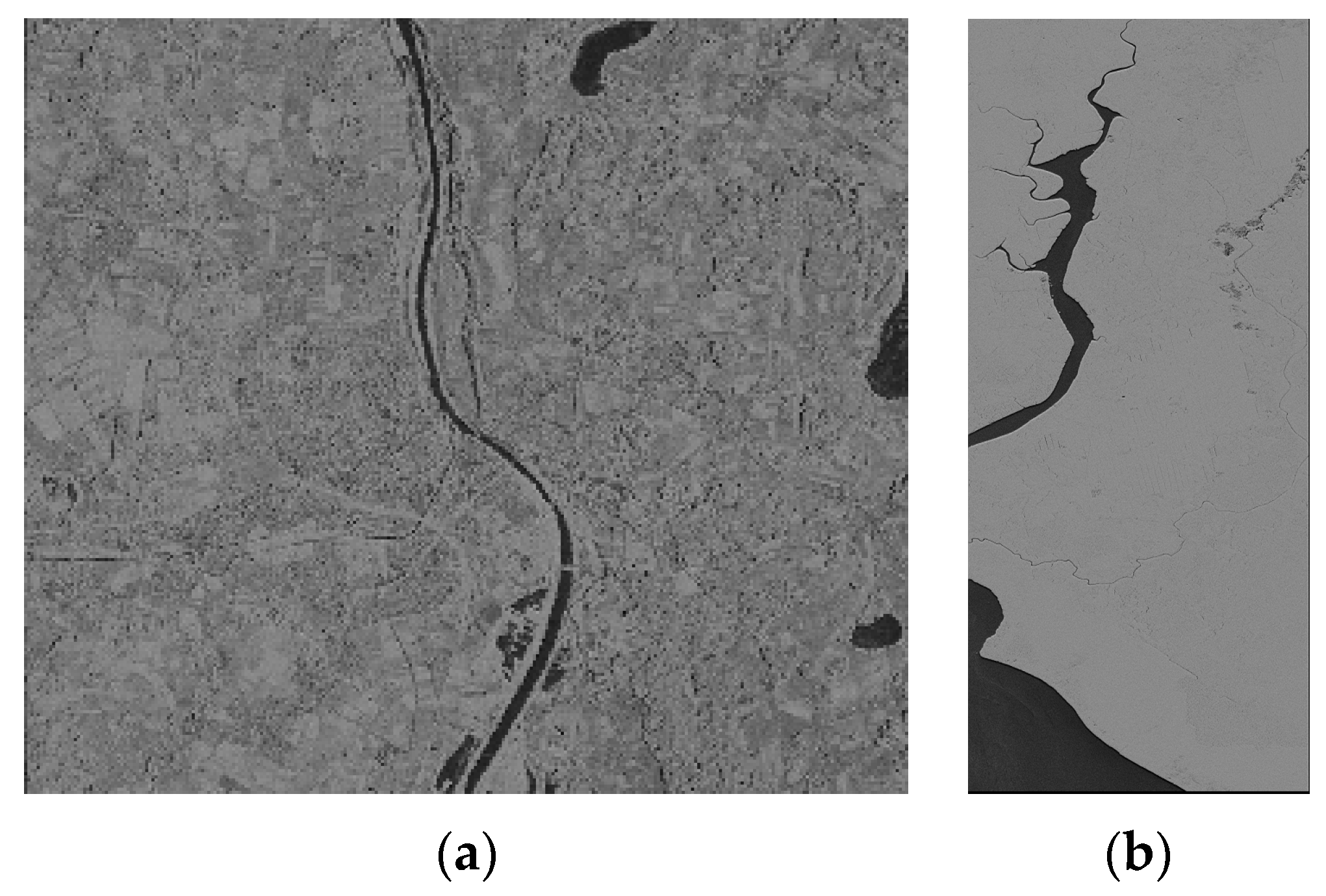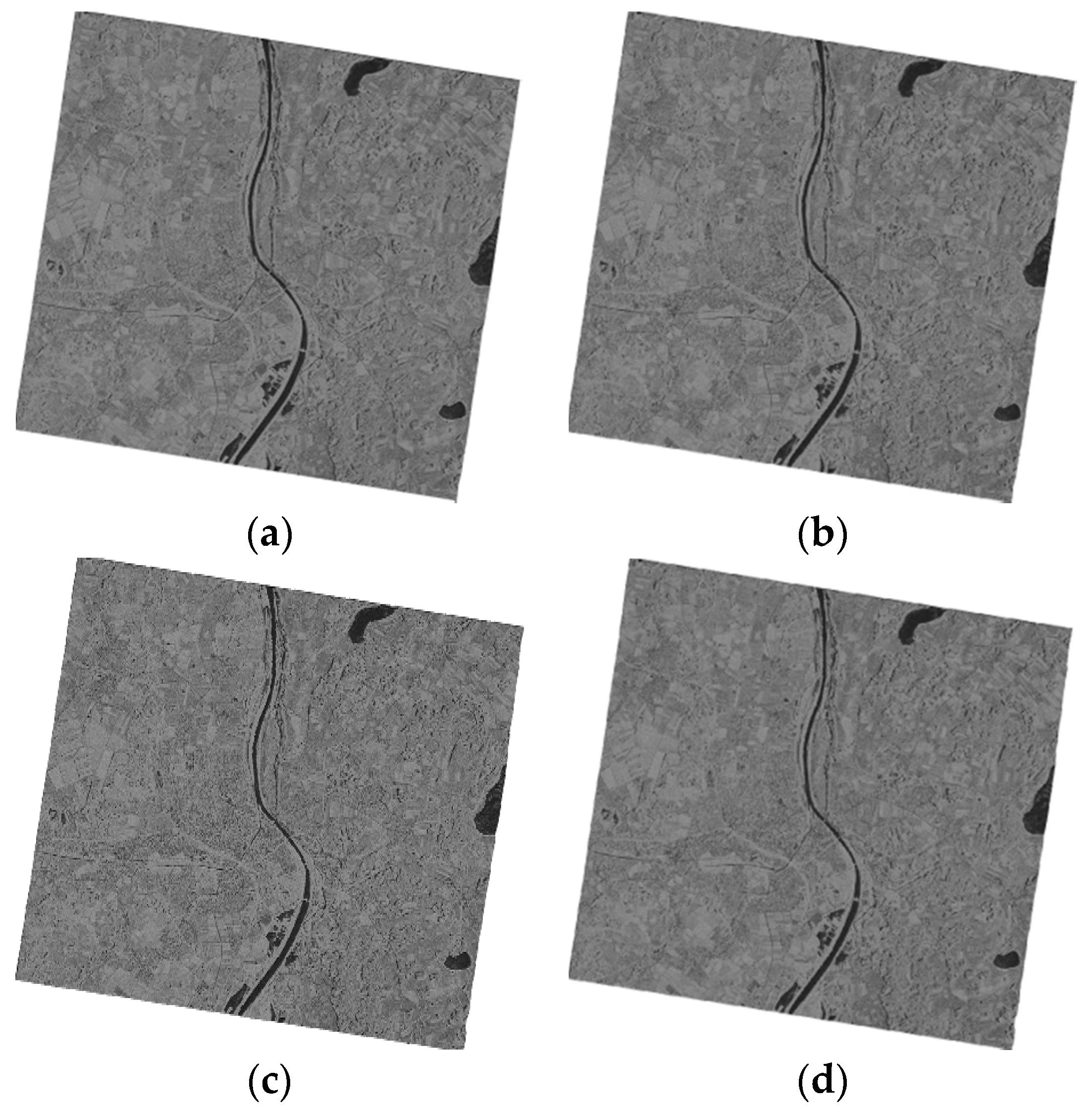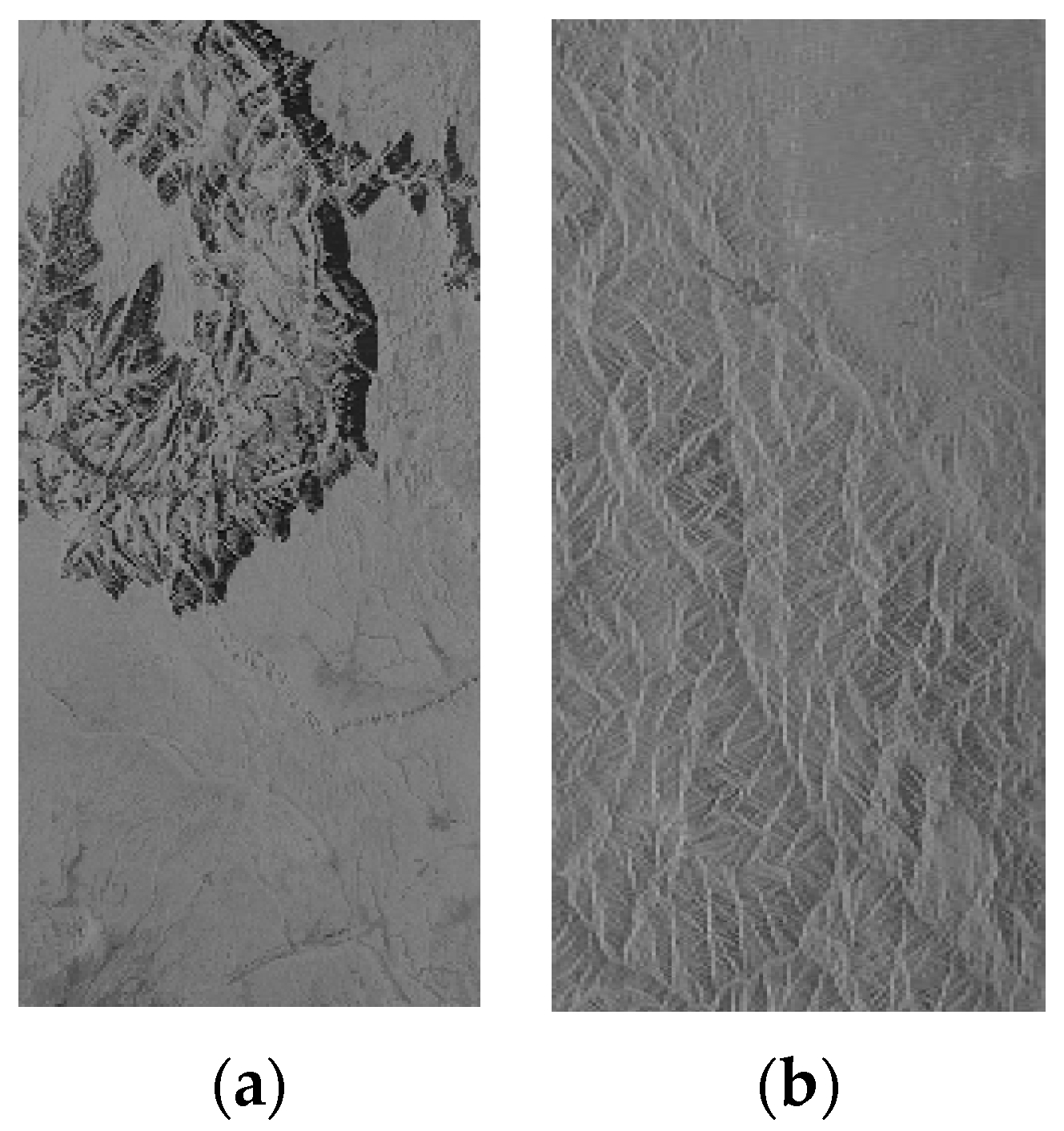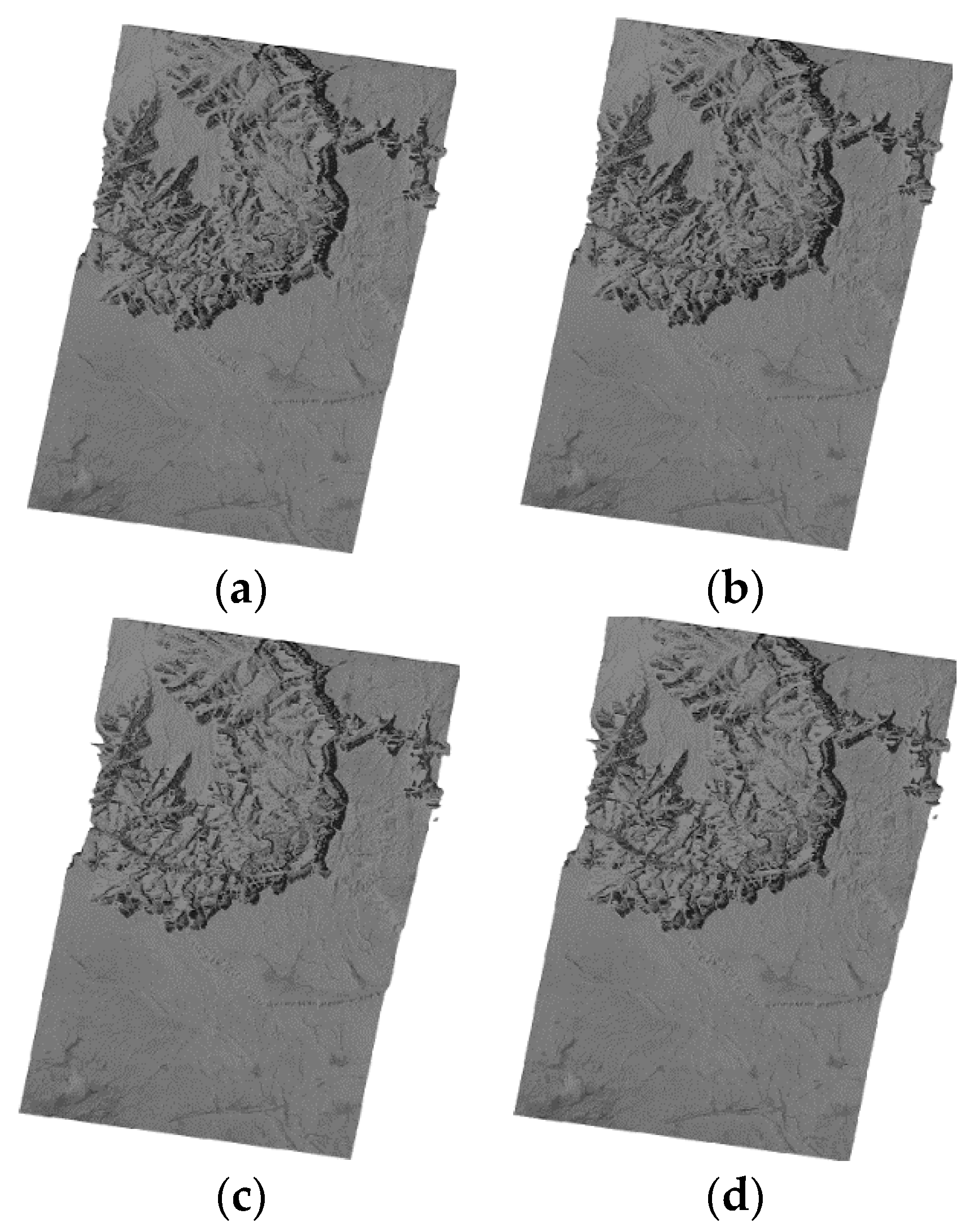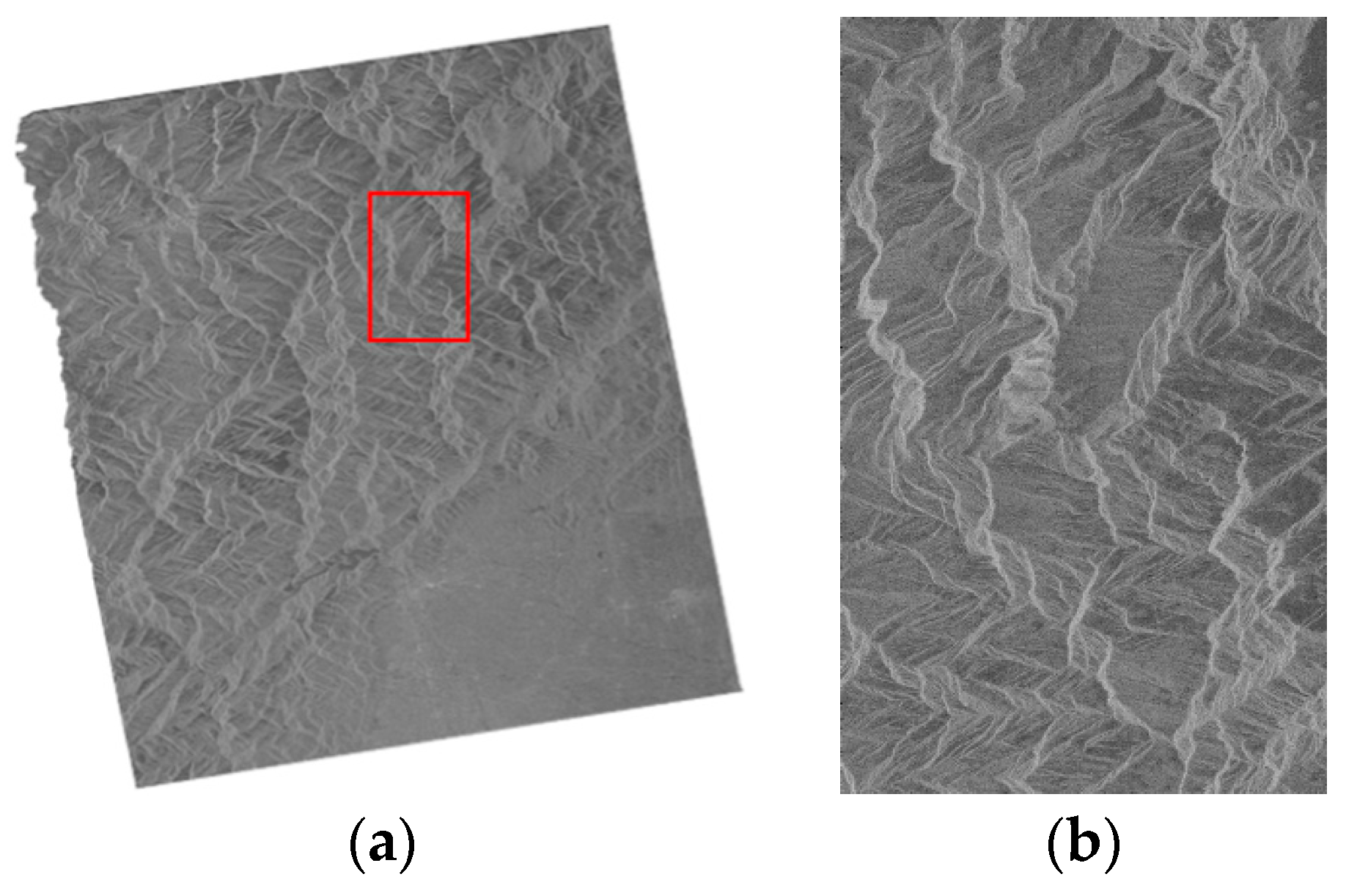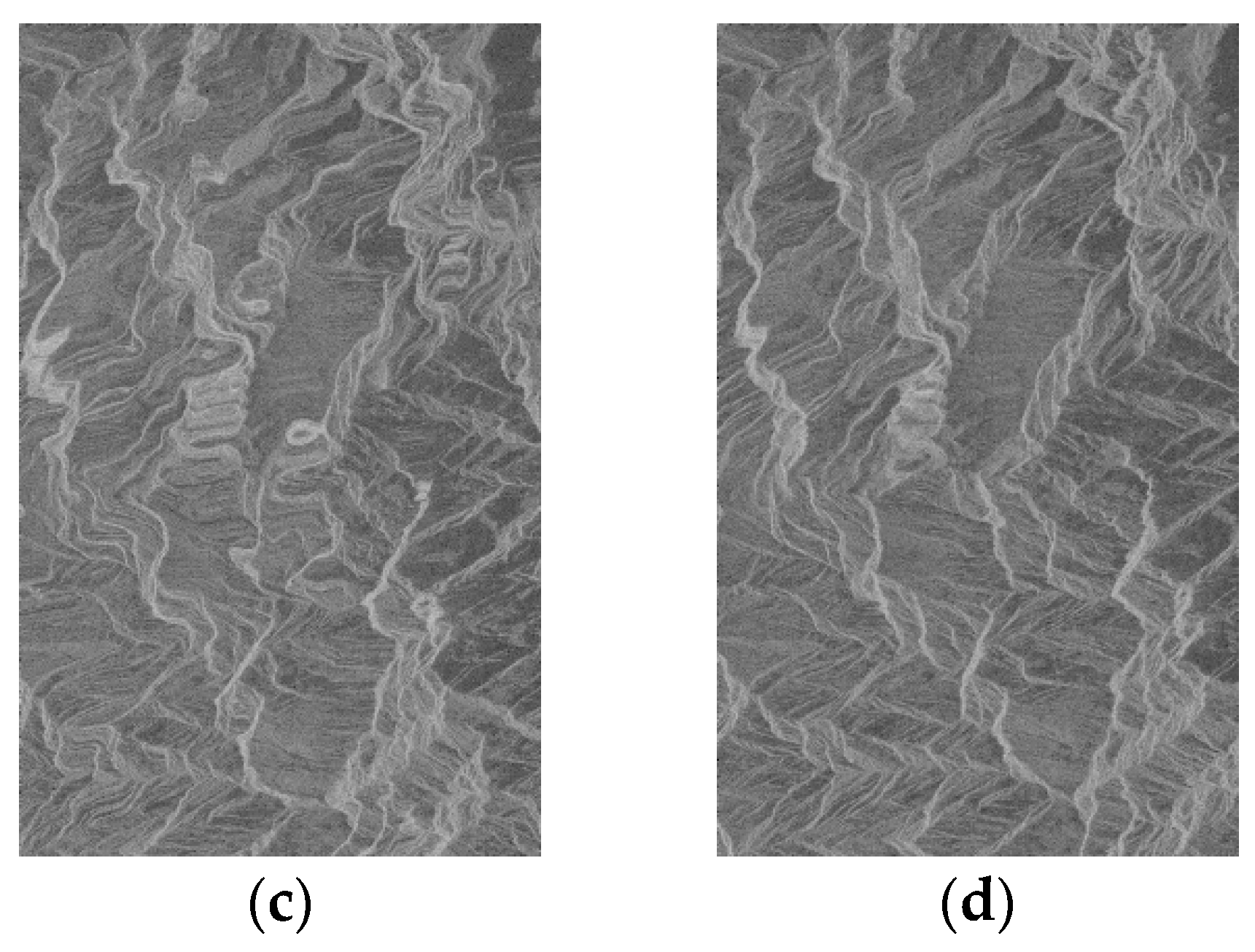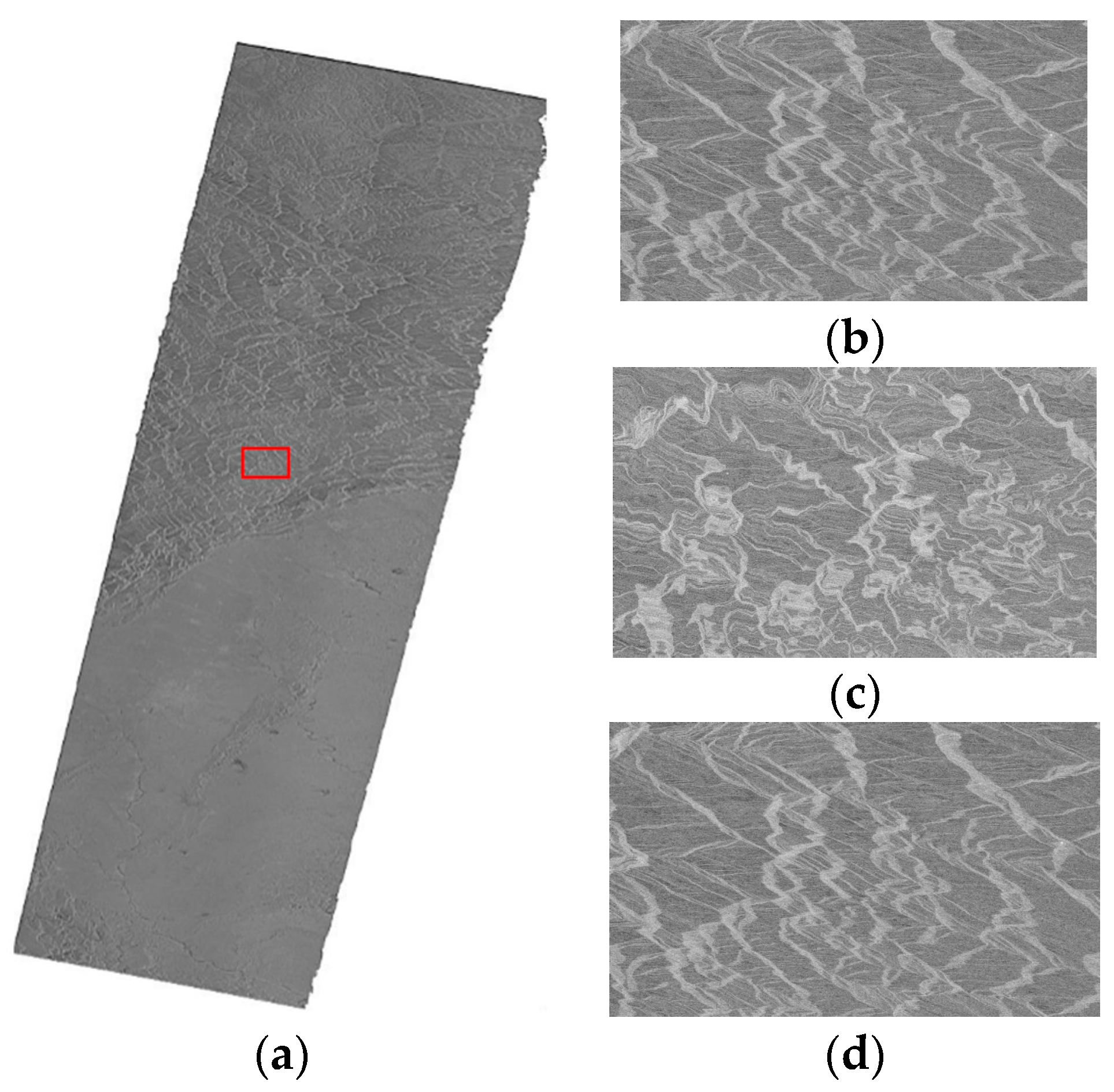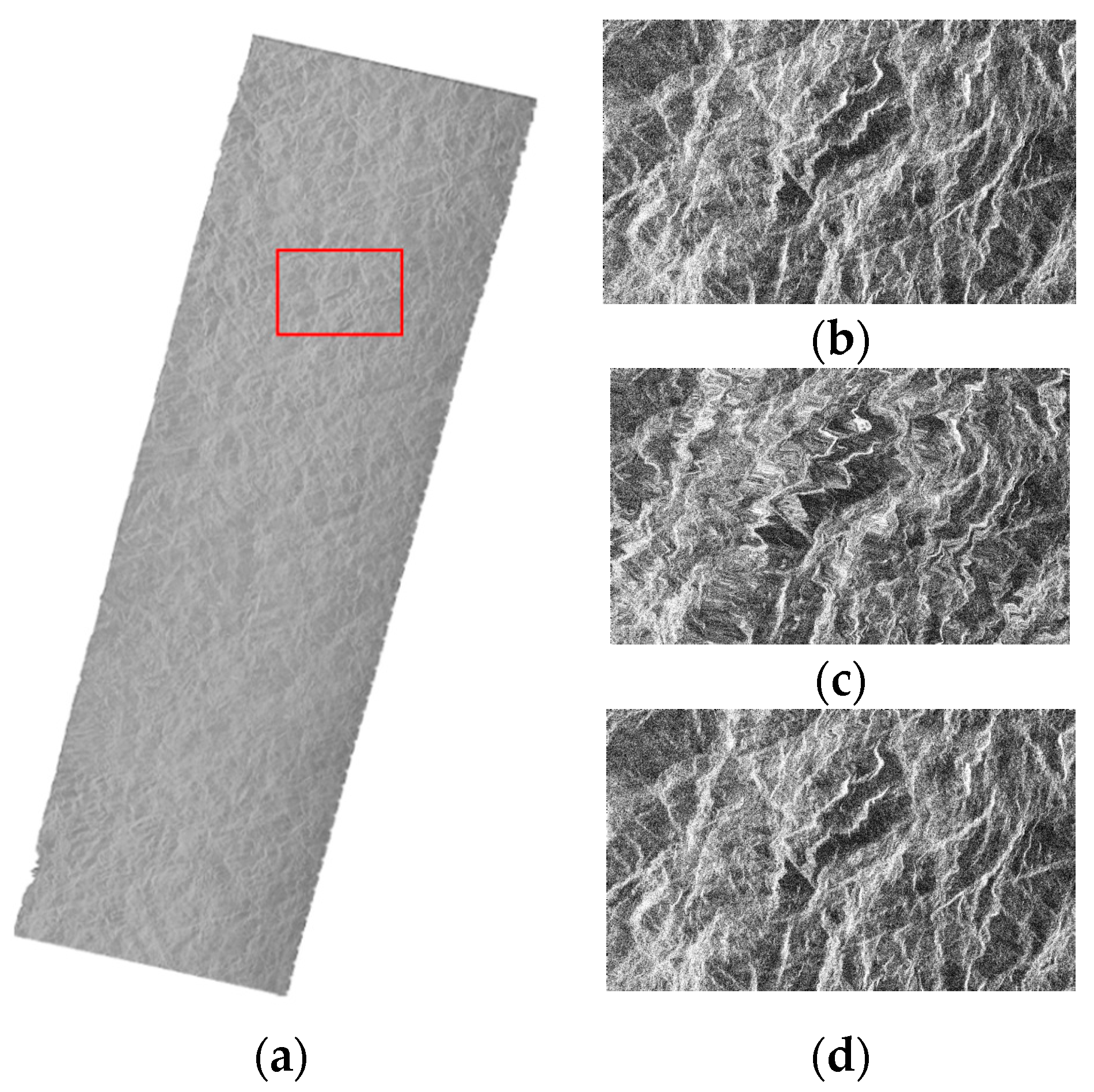1. Introduction
With the development of synthetic aperture radar (SAR), SAR images play an increasingly important role in military reconnaissance and national economies. Because a SAR image records the back-scattering performance of surface features influenced by system survey precision and terrain undulations, SAR imagery contains several types of geometric distortion that seriously restrict their application. To effectively use a SAR image, precise geolocation of image pixels is required and is also necessary for precise geometric correction during later image processing.
In 1982, Curlander first proposed the use of satellite ephemeris, echo time delay and Doppler data to derive the absolute location of a target, a method called the Range-Doppler (RD) algorithm [
1,
2]. Some researchers then made improvements to the RD algorithm and analyzed the sources of location errors. In 2006, Wang et al. used polynomial fitting of the Doppler center frequency to adjust the Doppler equation, based on the phenomenon that Doppler center frequency does not equal zero, which produced a model that suits both spaceborne and airborne sensors [
3]. In 2008, Fu et al. corrected the Earth model and developed a formula that added the target into the Earth radius to give the logical Earth model [
4]. Many other scholars are conducting correlation studies.
The rational polynomial coefficients (RPC) model is a recently developed pattern geolocation model for SAR imagery. In 2001, Tao divided the rational function model into two sub-models, “terrain-dependent” and “terrain-independent”, based on the solution mode of the rational function coefficient [
5]. In 2003, Di et al. compared the rectification results of the RPC model with the physical sensor model and discussed the feasibility of transformation from the RPC model to a physical sensor model [
6]. In 2006, Fraser et al. systematically studied how to use the physical model to calculate the RPC model, introduced the solution for deviation compensation of elements of exterior orientation, and summed up the regulation of error propagation [
7]. In 2006, Qin et al. first applied the RPC model to the geolocation of ERS SAR images, analyzed the precision of RPC coefficients for nine types, and determined the effect of the size of a control grid and slice numbers [
8]. In 2008, Zhang et al. introduced the RPC model, based on the RD model, for the geometric rectification of TerraSAR-X and COSMO SkyMed high resolution SAR images, derived the rational function coefficients of the RPC model, and obtained the orthorectified images [
9,
10]. Some researchers improved the RPC model. Fraser et al. performed bias compensation on the RPC model [
11], and Eftekhari et al. used a refined RPC model on TerraSAR-X images [
12]. Liu used control points to refine the RPC model, proving a new geometric correction method for SAR images based on the RPC model [
13]. Currently, the RPC model is increasingly being applied because of its high efficiency, ease of use and confidentiality.
The polynomial model is a traditional correction method, used for the orthorectification of optical images. It was used in the SAR imagery geometric processing during the initial development of SAR geometric correction theory. The polynomial model makes direct mathematical simulations of image distortion, avoiding the imaging space geometric process, which is simple and efficient. Some researchers studied the influence of elevation on geolocation error, providing a refined polynomial method for projection differences, which improved geolocation results [
14,
15]. On the basis of the Range-Doppler location model, a high-precision geometric correction method supported by an a priori DEM was proposed by Wang et al. [
16]. The method was named the elevation derivation (EDM) model; it uses interpolation fitting instead of an iterative process and has high efficiency and high precision. Yu et al. used TerraSAR-X data in experiments [
17] that showed that the new method can significantly improve the geolocation accuracy of SAR imagery and decrease the processing time by ten times under the ignorable error compared with the point-to-point iteration required to resolve the Range-Doppler model equation set.
There are many geometric correction methods in terms of model used, including the physical model, the mathematic model and the collinearity equation model. With respect to the auxiliary data, there are two fundamental approaches: with control points and without control points. Numerous studies in the literature focus on one method or one condition, but lack a systematic analysis of model performance and usability. This paper compares and summaries the performances, including efficiency, robustness and precision, of four models applied in different terrain: the RD model, the RPC model, a revised polynomial model improved by this paper and the elevation derivation method. Different application requirements are considered, when deciding appropriate geometric correction models to achieve a balance of efficiency and precision.
4. Conclusions
The RD model is the standardized method of geometric correction but is not suitable for real time applications because of large computing times. The PM model is efficient but is the least precise. It was valuable for the flat terrain SAR image rectification of the polynomial model, for which the maximum error was 0.19 pixels and the plane error was 0.02 pixels. Compared with the RD model, the RPC model and the EDM model lost some precision but their efficiencies were greatly improved. Therefore, the two models have higher value for engineering applications.
The EDM model has stable precision regardless of terrain variation. Compared with the EDM model, the location error of the RPC model was slightly higher on the mountain terrain area but was much lower on the flat terrain area because the EDM model could better rectify the location errors resulting from the terrain on the undulating terrain area. On the flat terrain area, because of the smaller location error caused by terrain, the RPC model can precisely describe the relationship between geographic position and image coordinates. The PM model has potential because of its high efficiency; future work should be conducted on correcting the influence of elevation.
Every model has its own characteristics with respect to algorithm precision, efficiency and robustness, and an appropriate model can be selected based on the application requirements and the features of the SAR image. Considering their comprehensive advantages with respect to precision, efficiency and robustness, we propose to use the EDM model or RPC model for conventional applications. When the topography is complicated or the image is too large, the EDM model is recommended. The PM model can be used for flat terrain areas where there is no requirement for high precision. The users can consult
Table 10 before their choosing a model.
